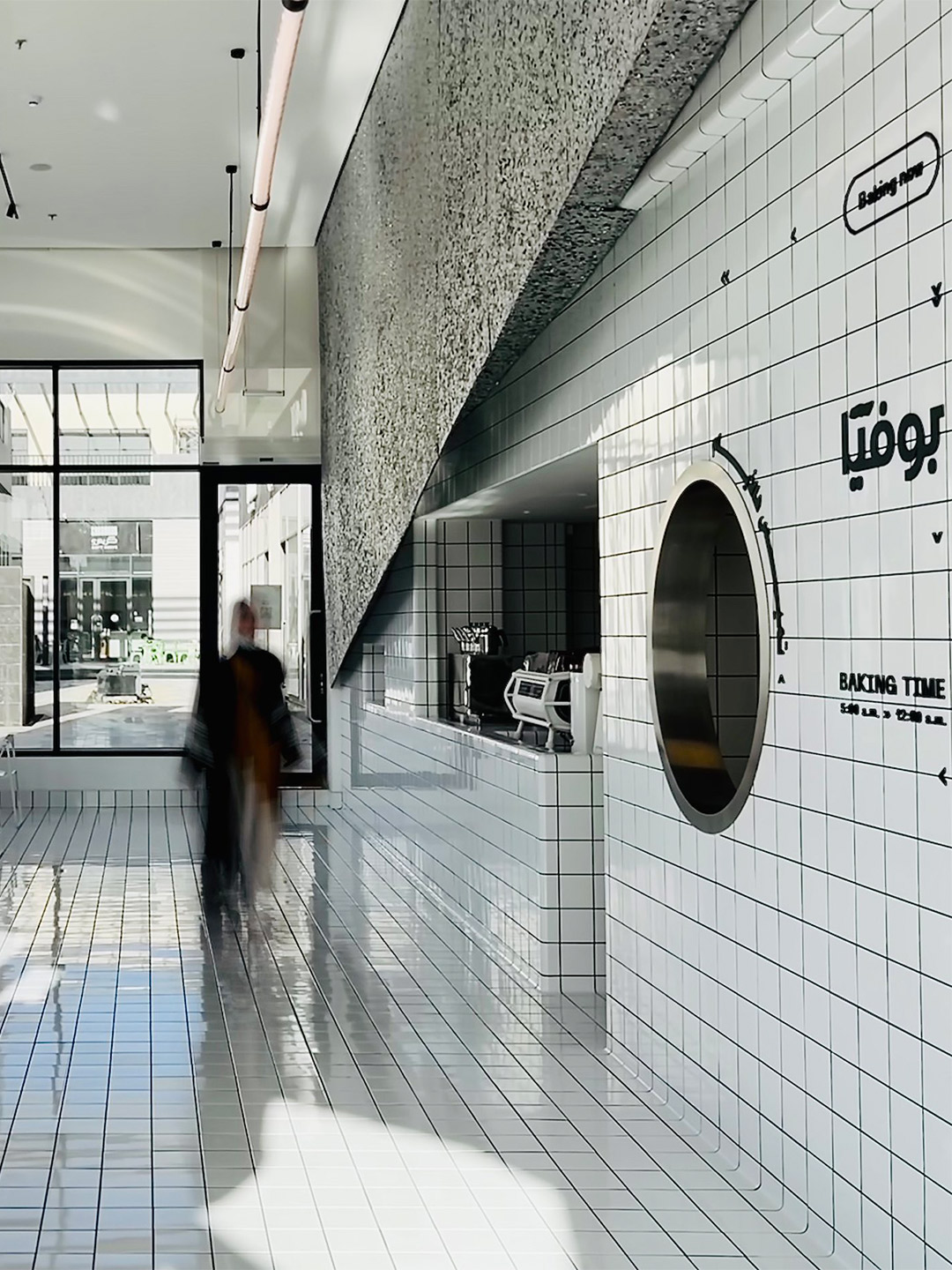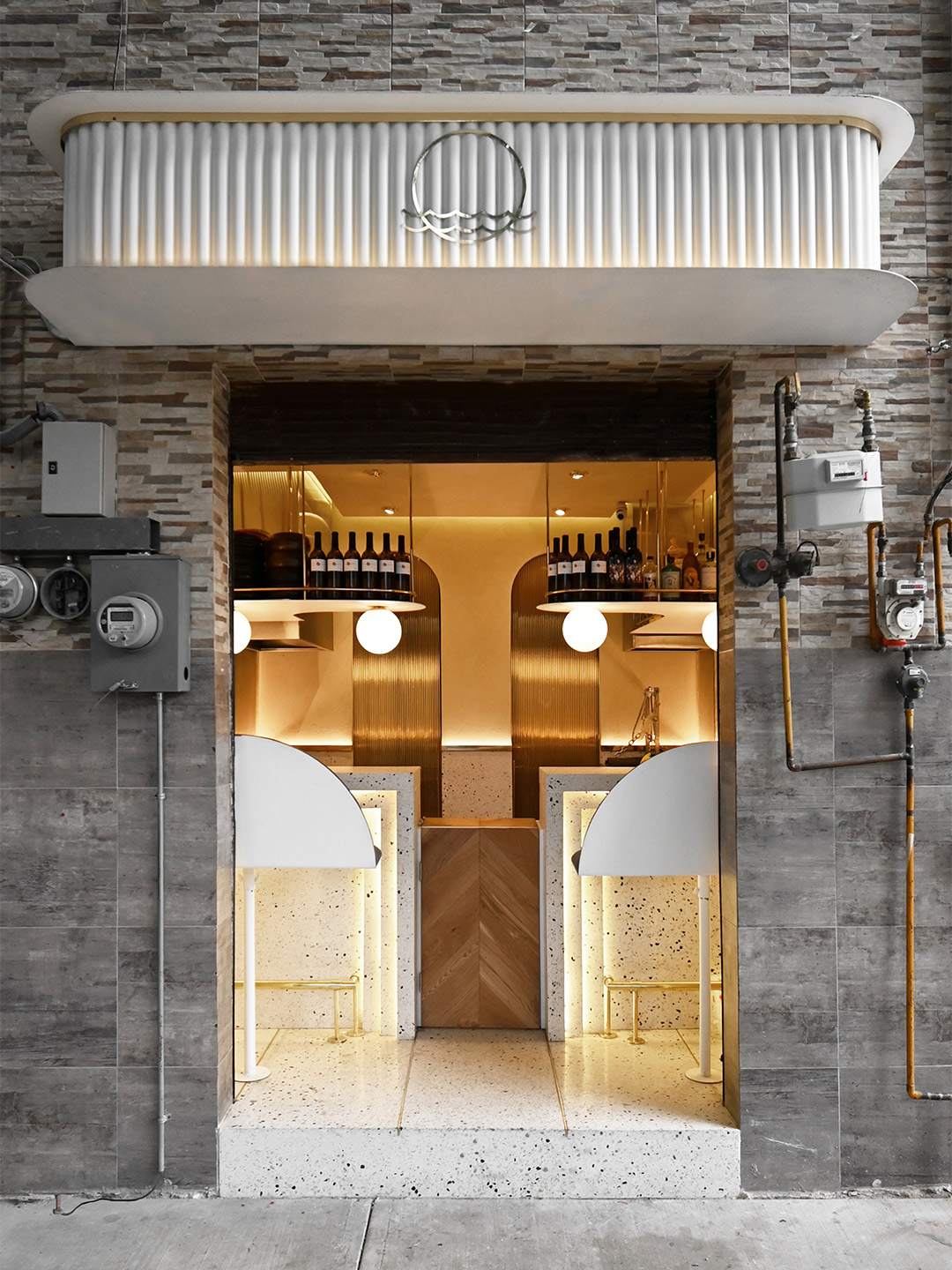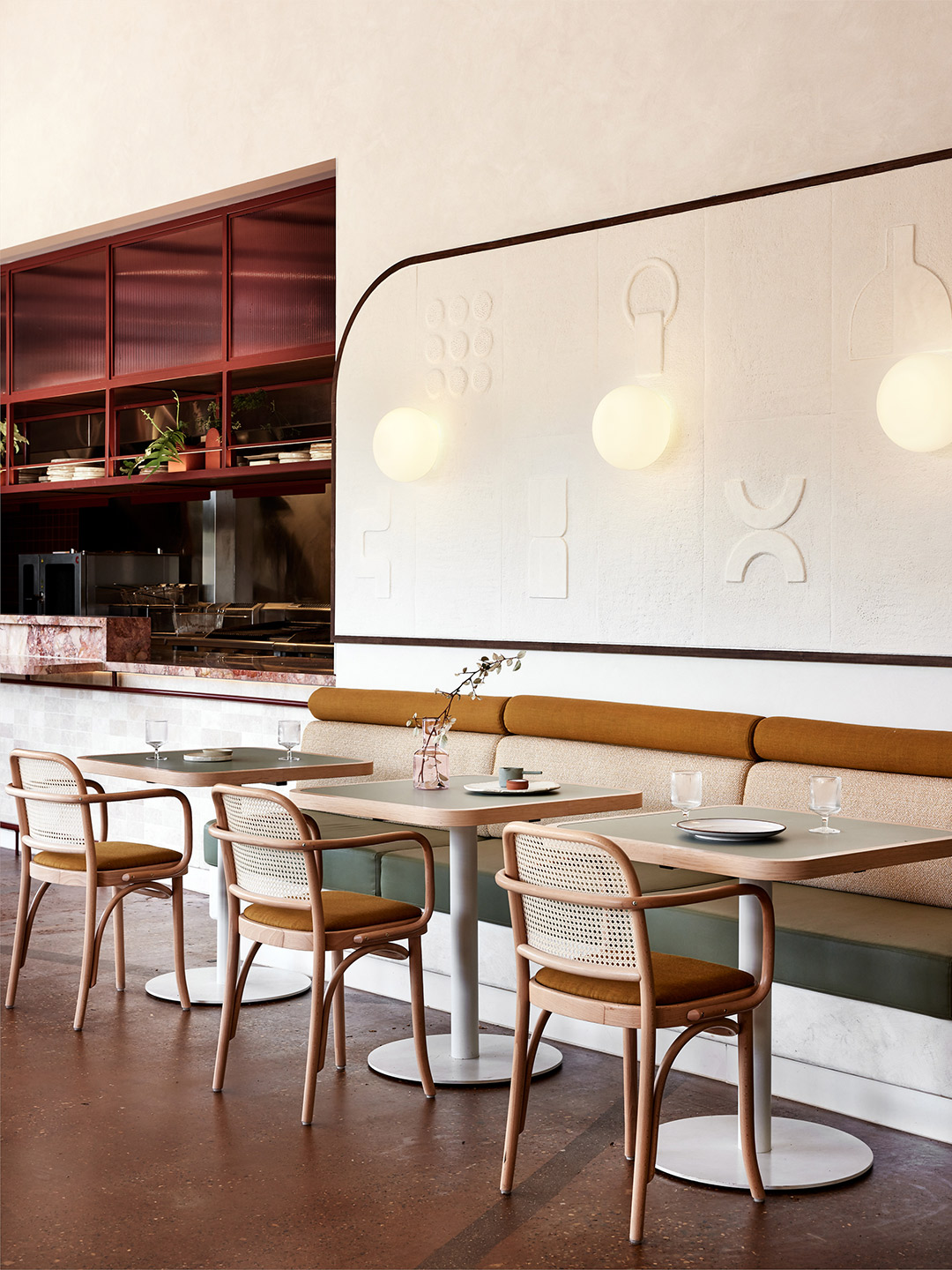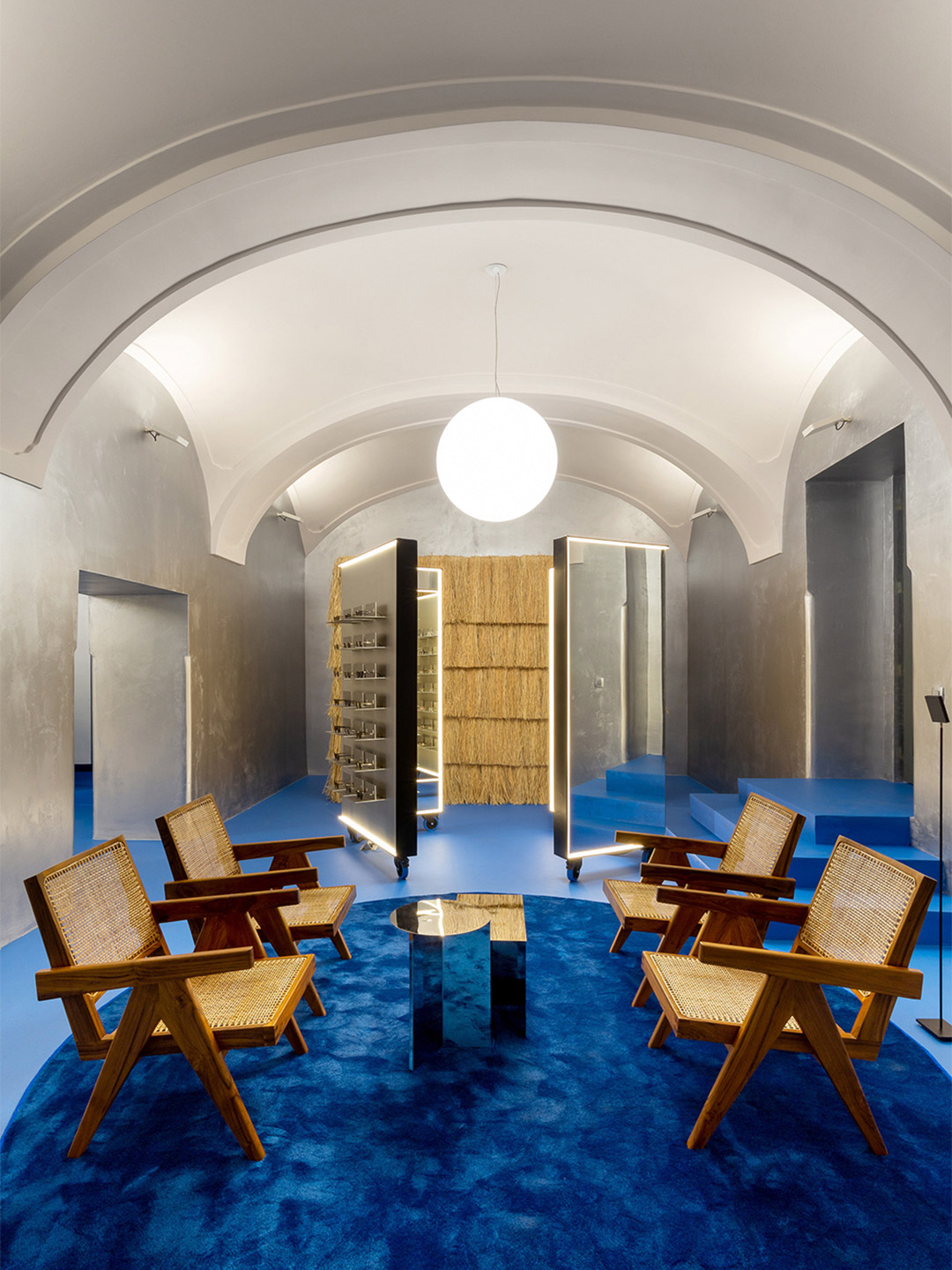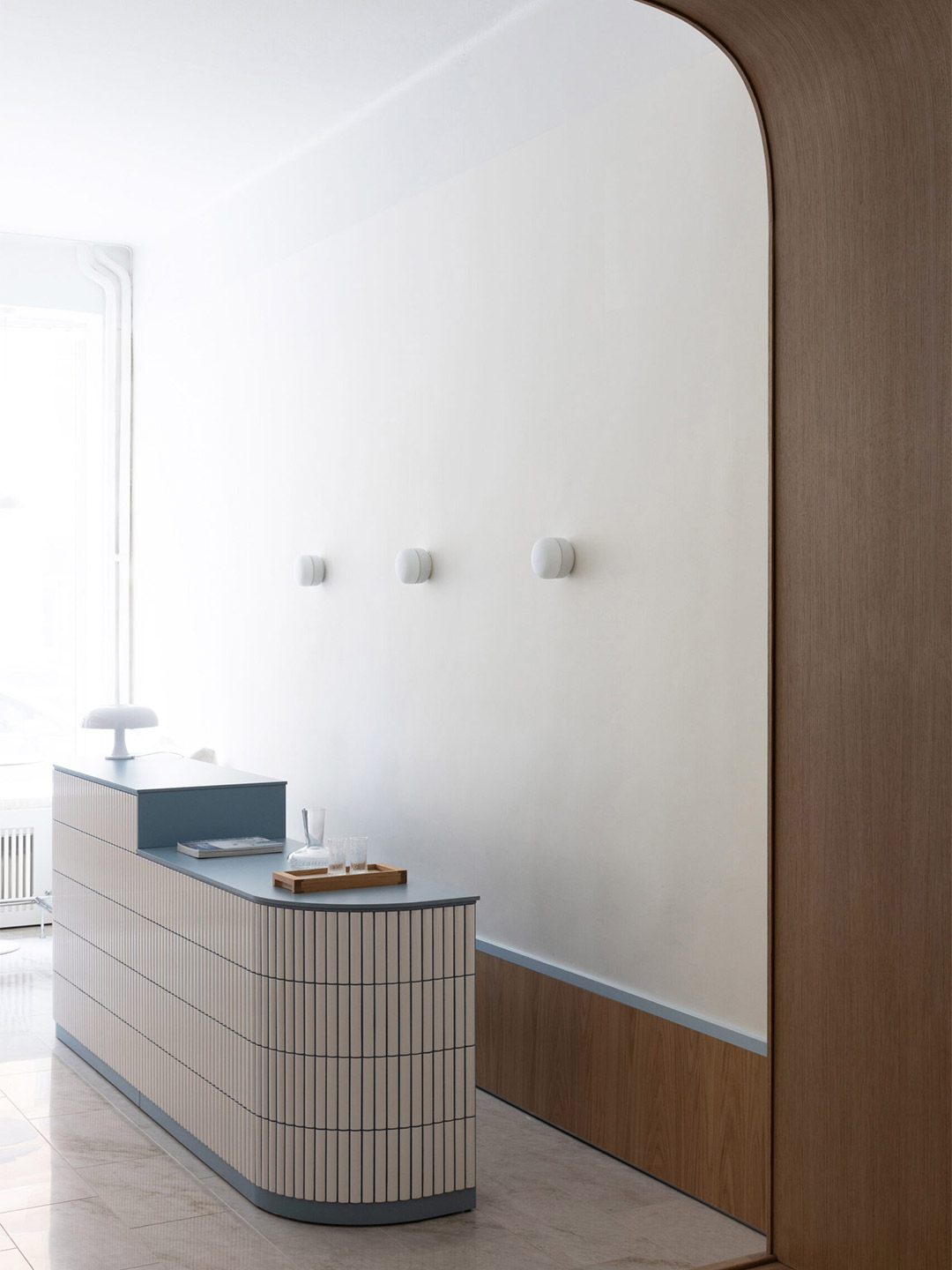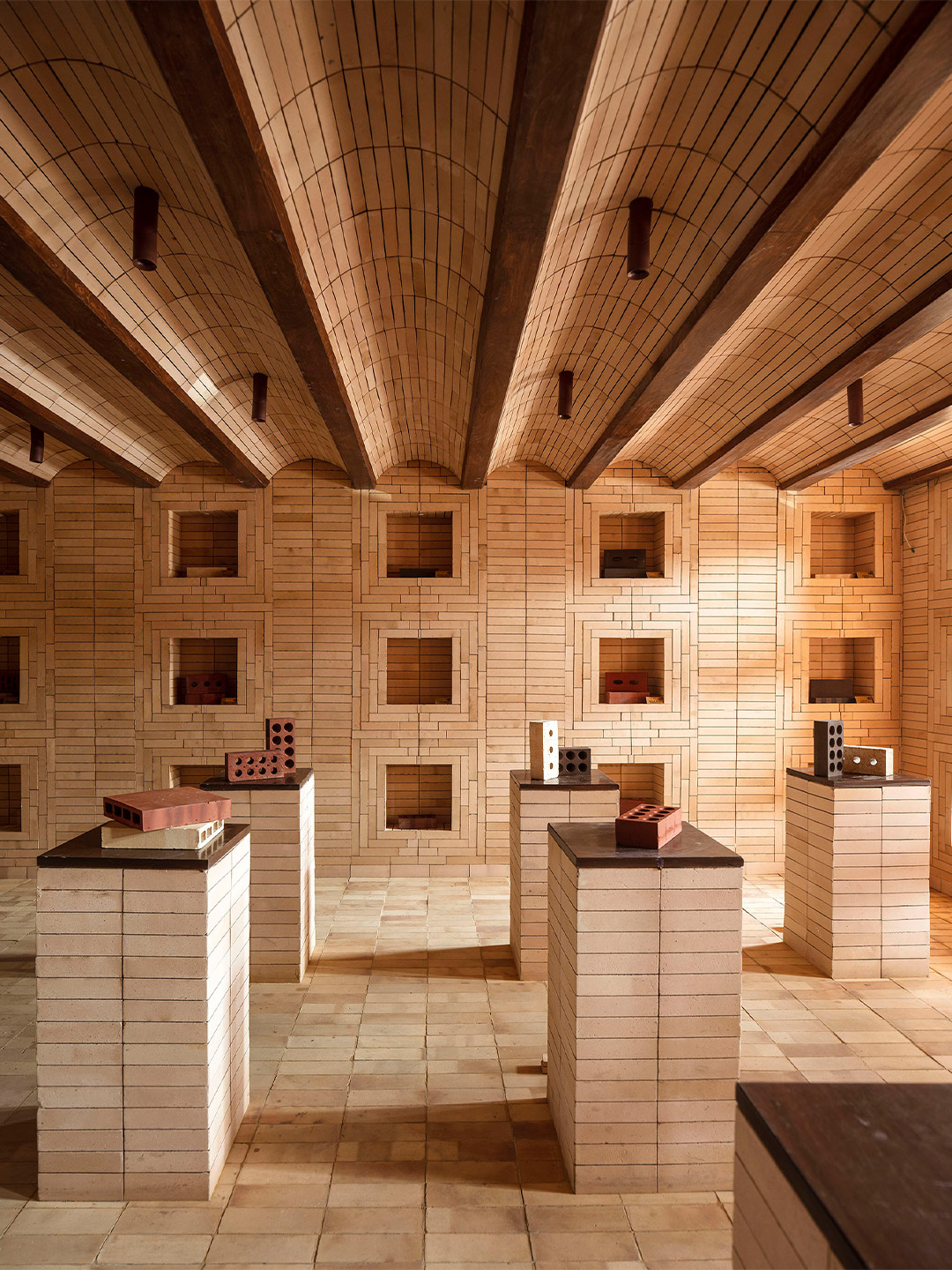Madrid-based design office Puntofilipino, led by Gema Gutiérrez, eschewed glitz and glamour in favour of industrial materials and an “apocalyptic atmosphere” for the Berlin home of honey and skincare retailer Honeyz. Hidden at the end of a beautiful avenue of ancient trees, the outlet is located within a cluster of several neoclassical buildings, each with great historical value. “The charm of the building and the architectural setting was what attracted the founders of Honeyz to this place, with the intention of making it a destination of reference,” Gema says.
Measuring in at just 75 square meters, the Honeyz retail store references the sophisticated history of a city that, for hundreds of years, has been celebrated as an epicentre of arts and cultural events. “Though visually rich in contrast, colour, texture and shape, the interior draws from a limited palette of materials, which resonates with an almost sacred sense of scarcity,” Gema explains.
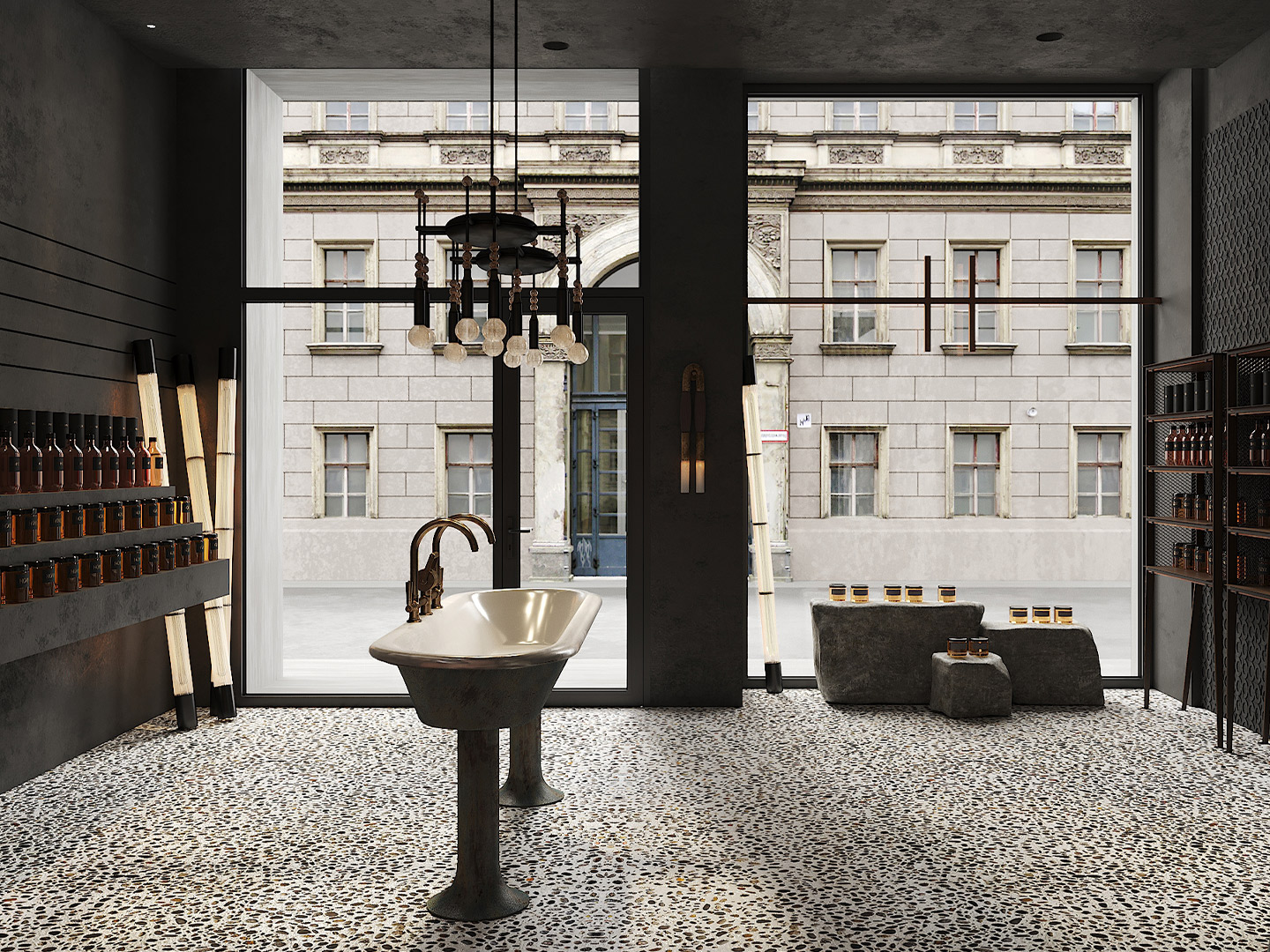
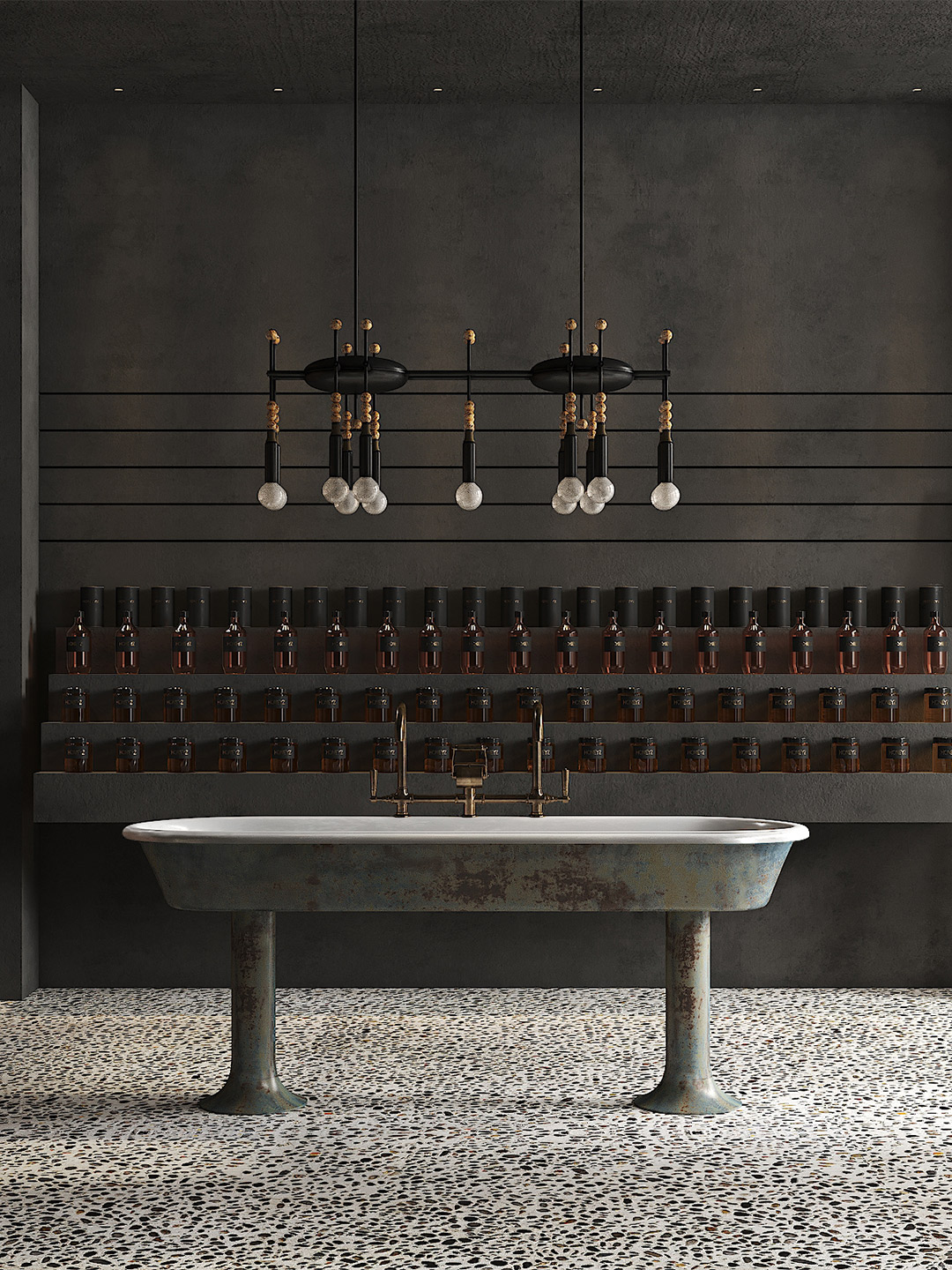
Honeyz boutique in Berlin by Puntofilipino
Driven by a commitment to preserving the building’s historic character, Gema stripped the unoccupied edifice back to its essentials and introduced a palette of earthy tones. “The space’s stark aesthetic of concrete, pebble floors, and corten steel elements harks back to its bunker days,” she says.
Natural materials such as wood, stone and corten steel then ensure that the furniture, much of which has been custom made, blends in harmoniously. “A contemporary furniture collection imbues the space with subdued elegance,” Gema enthuses. The additions that perhaps stand out the most are the natural stone blocks and the sculptural, freestanding bronze washbasin that was designed by Puntofilipino.
“Subtle juxtapositions between clean lines, polished textures and the immaculate craftsmanship of modern furniture and the worn patina of the building’s fabric create a harmonious interplay between old and new, further sharpening the spirit of the flagship store,” Gema explains.
The designer adds that the studio approached this project as an exercise in “artistic expression” underpinned by the desire to create a unique space connected to the history of the city. Based on a nuanced palette of black tones and the predominance of concrete surfaces, the store is a fine example of minimalist design and conceptual rigour.
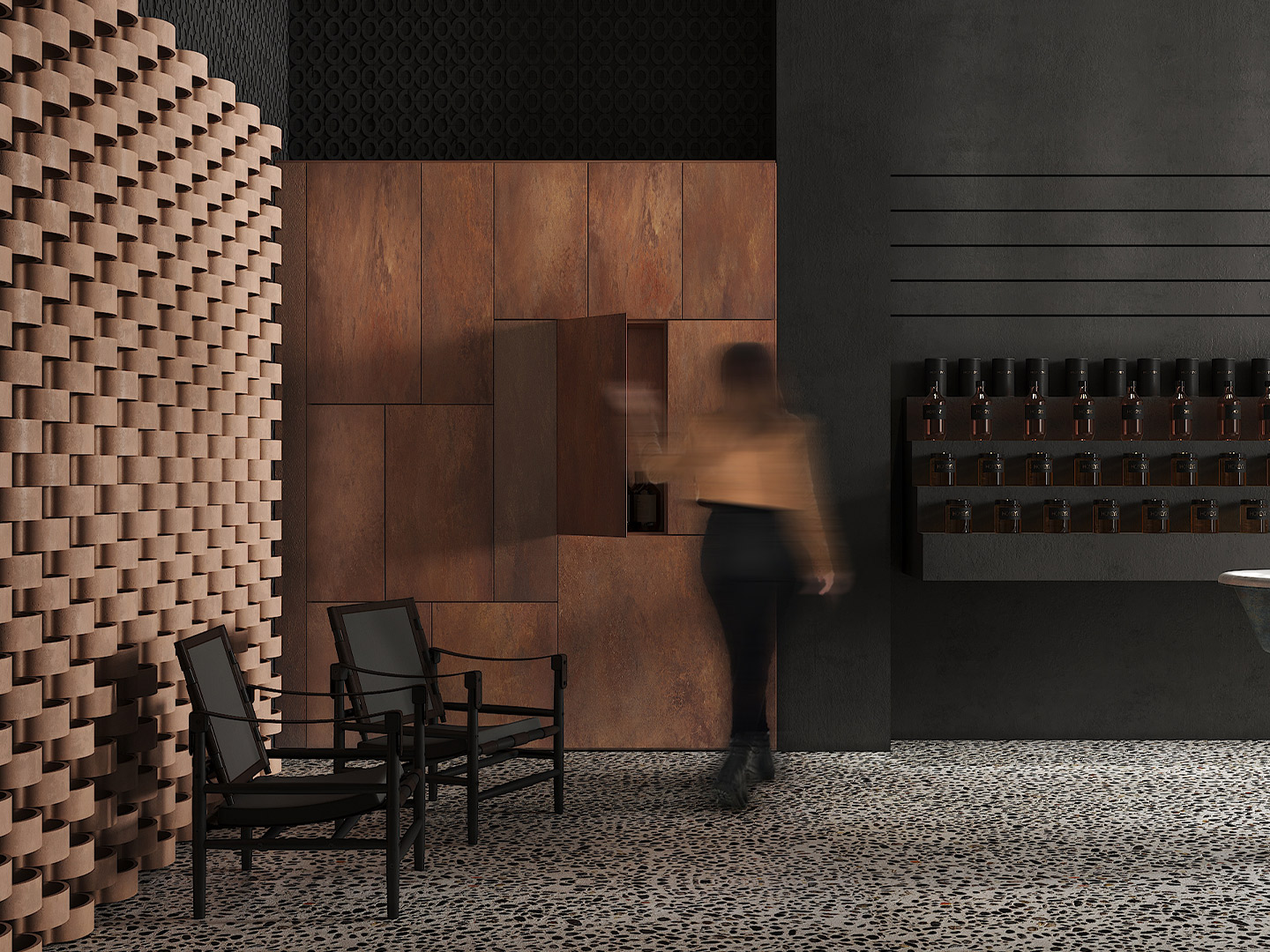
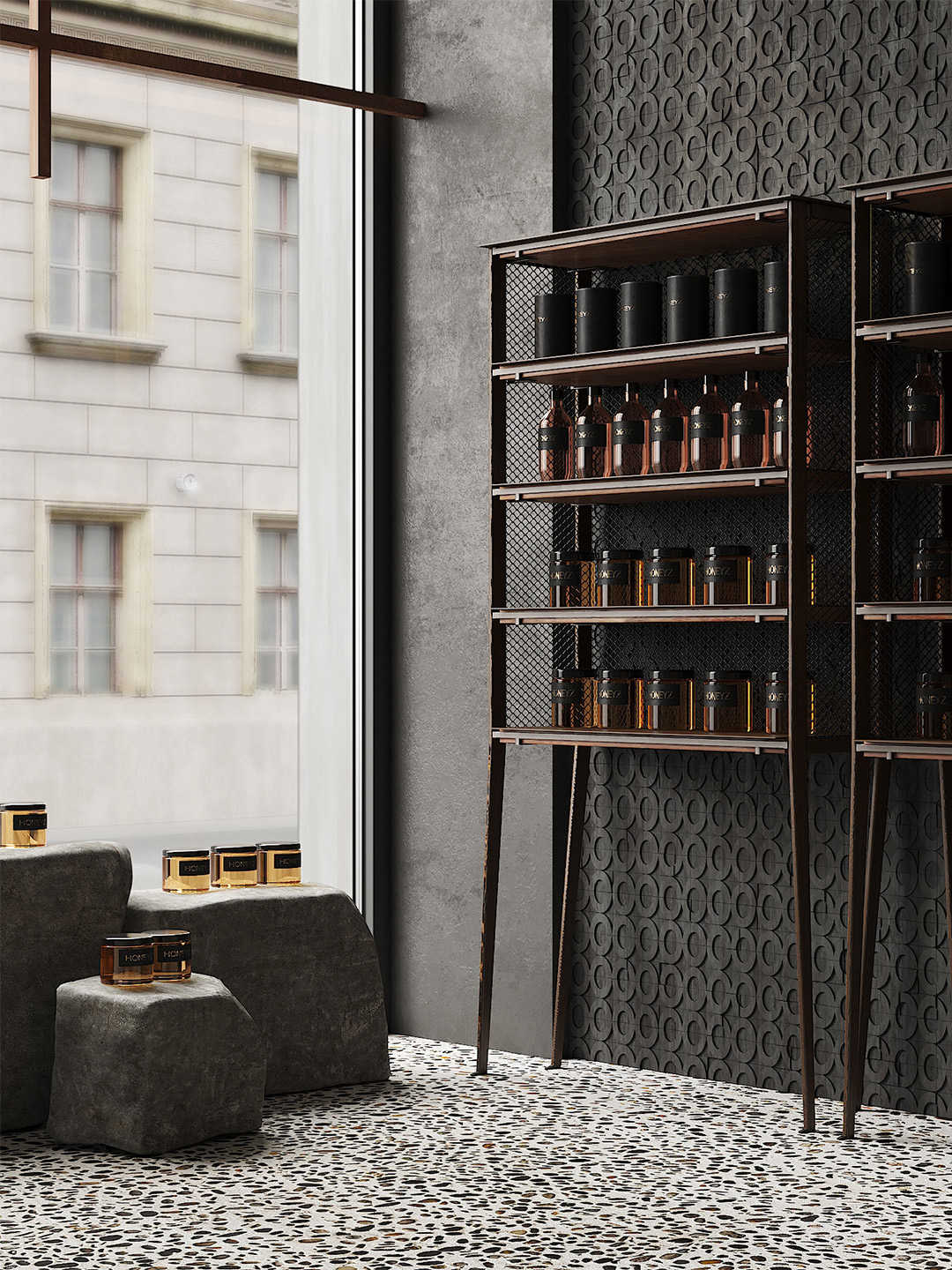
Despite the monochromatic colour palette, the concrete landscape that Punotfilipino has conjured up is far from dreary. A variety of concrete finishes and textures – including polished, stained and rough stucco – create a rich spatial tapestry, enhanced by changing light and moving shadows as the day progresses. “The use of concrete and pebbles, seductively illuminated by filtered daylight, creates a meditative atmosphere that resonates with the contemplative tranquility of nature,” Gema says.
The predominance of concrete is fortified by the subtle presence of complementary materials, which appear in bespoke and selected furniture and fittings. As an eye-catcher, a suspended lamp from Apparatus can be seen in the distance; at the back of the premises, a screen of clay latticework by the Spanish firm Cerámicas Ferrés takes pride of place.
But to give shoppers a truly unexpected experience, the designer leaned into the dystopian theme – not the most common trope employed in beauty retail – resulting in dark, bunker-like areas. “A bunker is probably the last place you’d think of buying your honey and skincare products, but that’s part of the fun of this space,” Gema says. “We believe this is a mindset that more retailers should adopt with their physical locations; it’s these kinds of Instagrammable, story-driven interiors that will really incentivise shoppers to spend their money offline.”
A bunker is probably the last place you’d think of buying your honey and skincare products, but that’s part of the fun of this space.
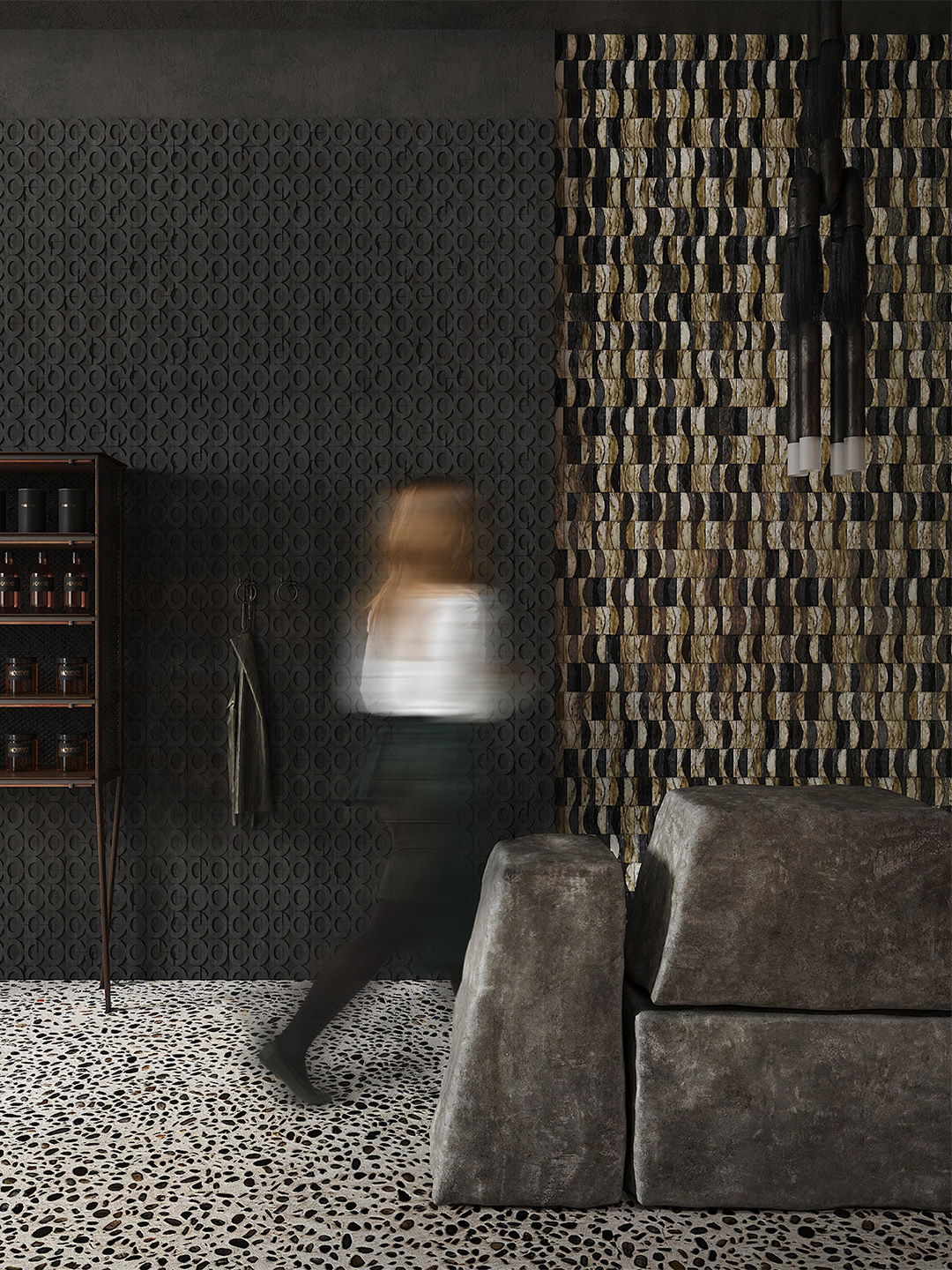
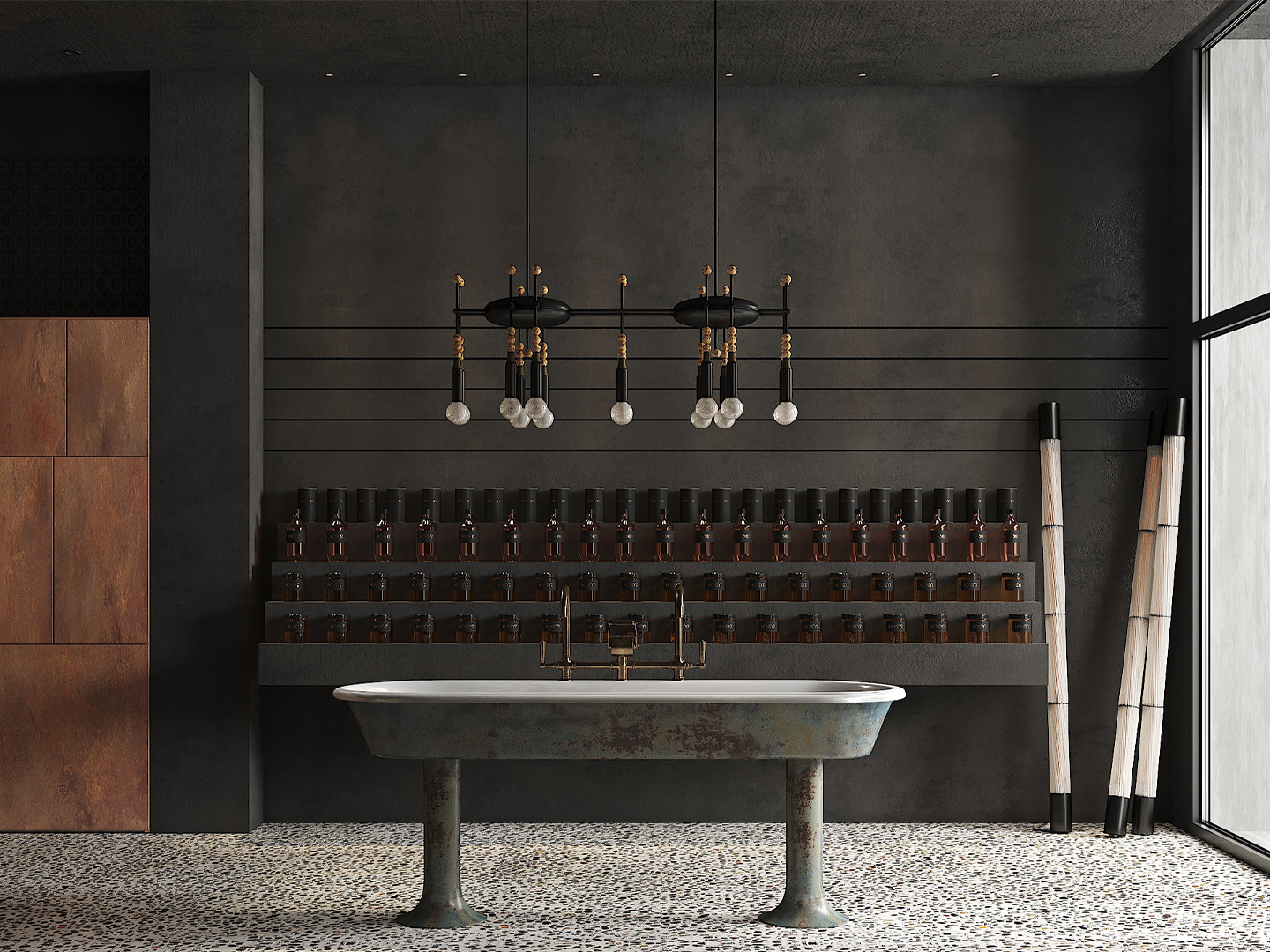
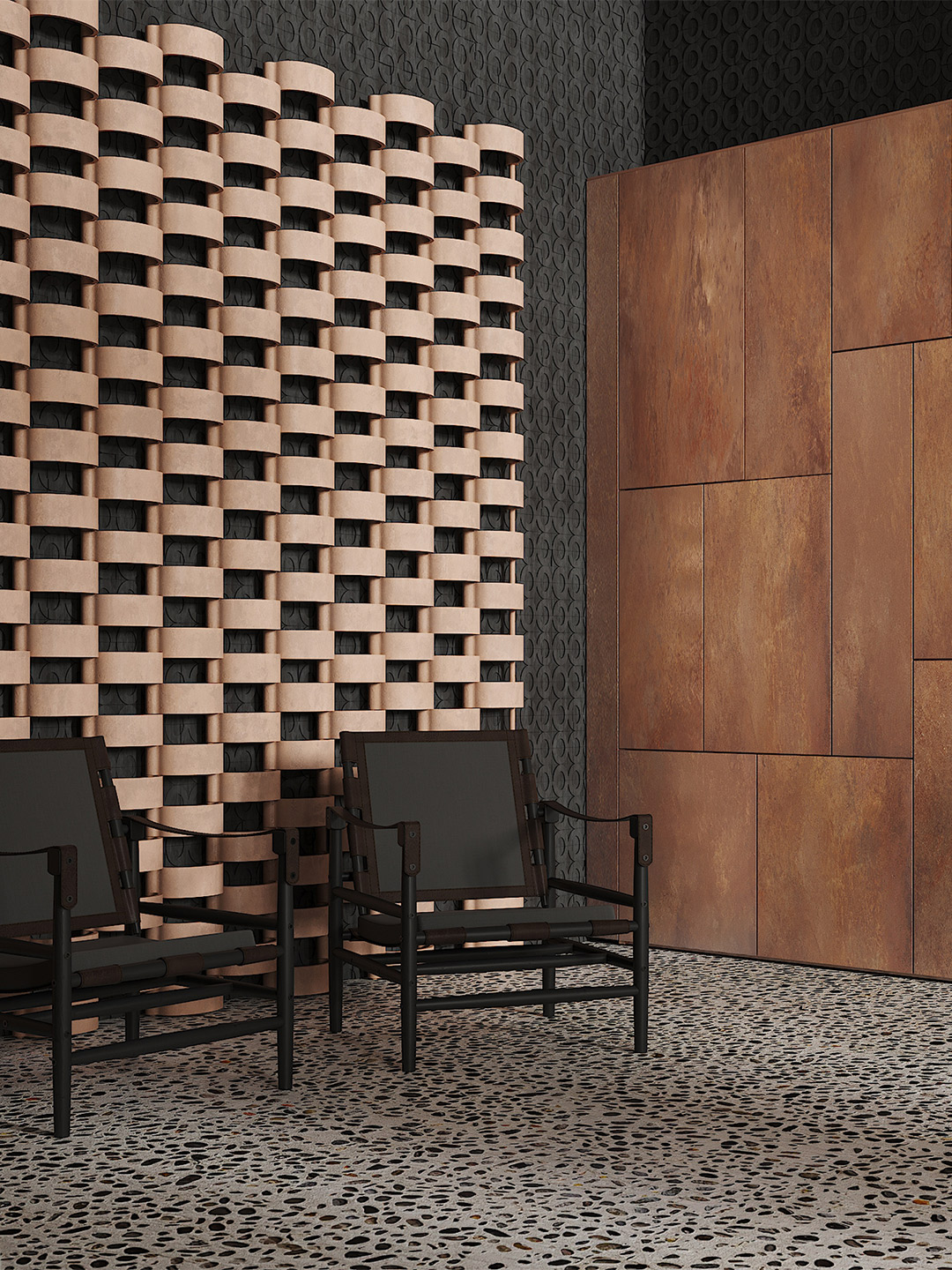
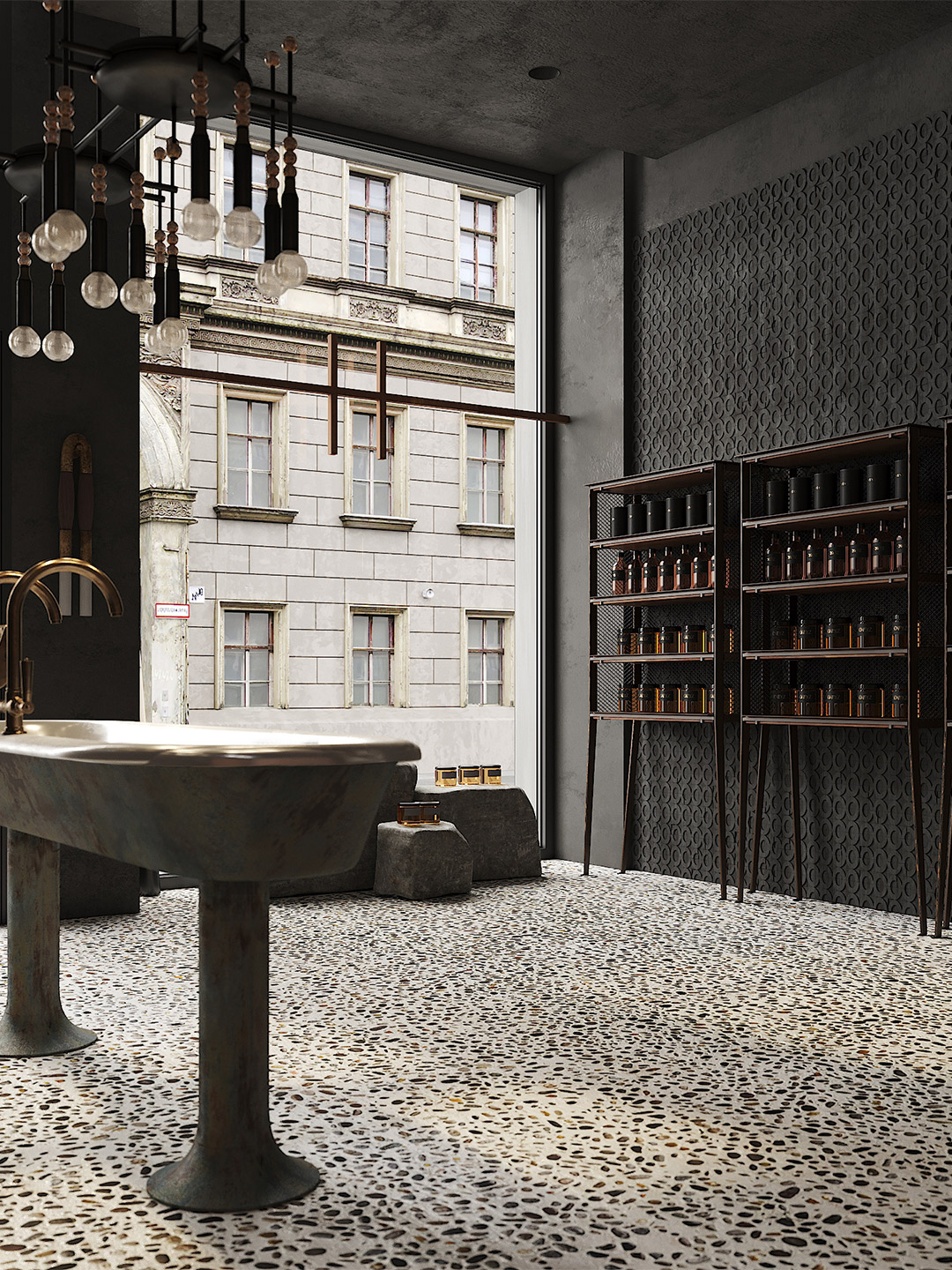
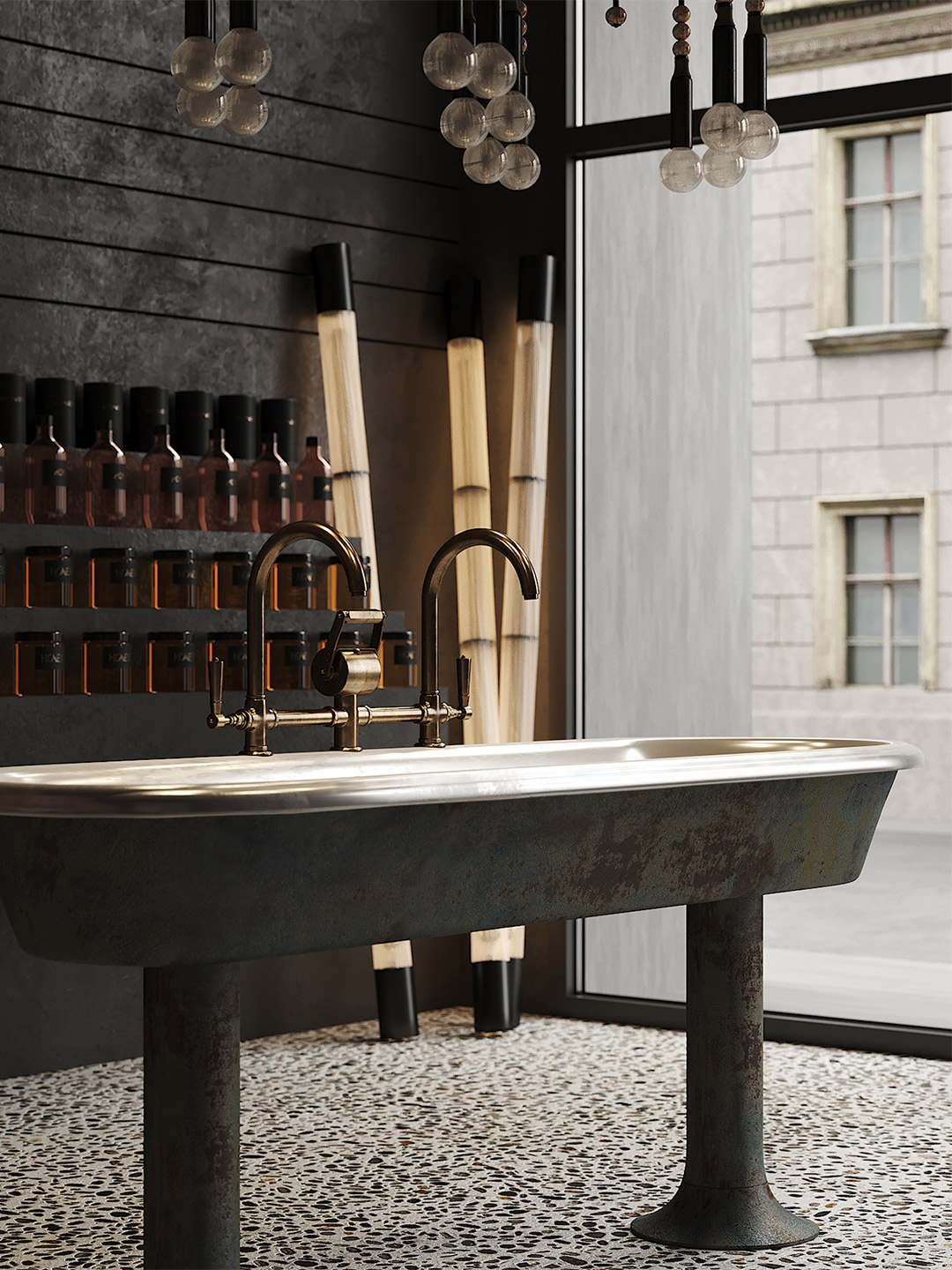
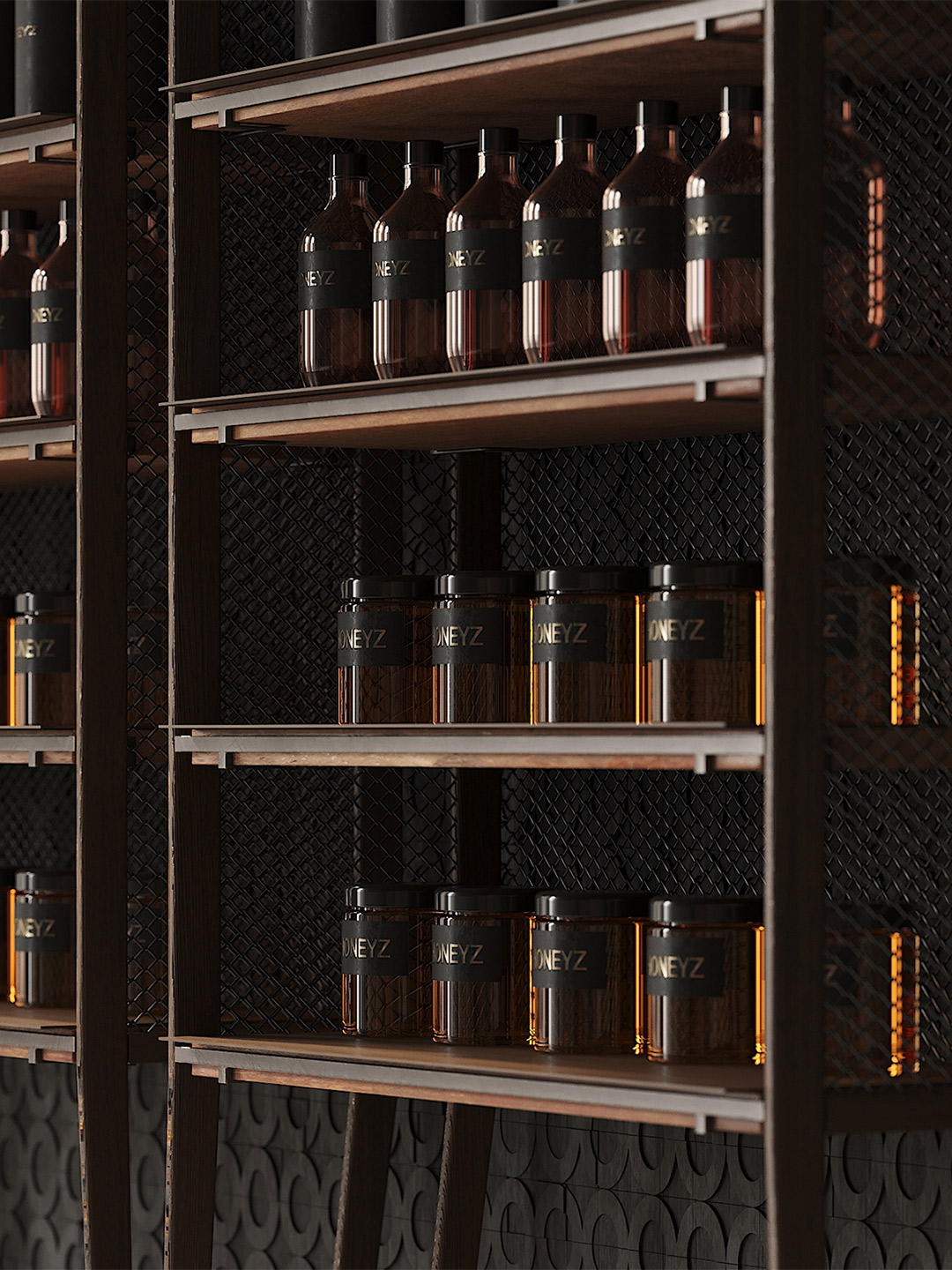
Puntofilipino also designed the Memphis Milano apartment in Italy. Catch up on more architecture, art and design highlights. Plus, subscribe to receive the Daily Architecture News e-letter direct to your inbox.


